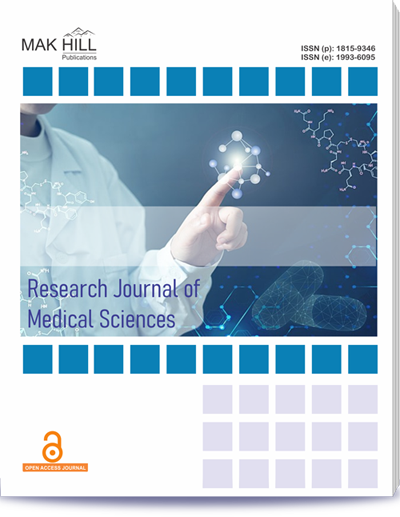
Research Journal of Medical Sciences
ISSN: Online 1993-6095ISSN: Print 1815-9346
Abstract
The incidence and patterns of mandibular fractures vary by country and population age. This retrospective study evaluated the etiologies and patterns of mandibular fractures in children. The clinical records of 89 children (45 males and 44 females) aged 0‐12 years who presented with mandibular fractures from July 2018 to June 2023 were retrospectively reviewed. The sex, patient age, site of fracture, etiology of trauma and monthly variations of the fractures were recorded. Descriptive statistics, the z‐test and chi‐square test were used for statistical analysis and the p‐value was set at <0.05. 89 children (male to female ratio 1.02:1) sustained 131 mandibular fractures. Within the study sample, the 6‐9 year age group most frequently experienced fractures (47.3%). Falls and road traffic accidents (RTA) were the two most common etiological factors that accounted for 44.9 and 24.7% of cases. The condylar fracture was the most common anatomical location (38.9%) followed by the angle (20.6%), parasymphysis (18.3%), body (15.3%) and symphysis (5.3%). A single fracture (51.7%) was more common than multiple fractures (48.3%). The month‐wise distribution of mandibular fractures was fairly constant. The condylar region was the most common anatomic site for fractures in addition, a fall and RTA were the major etiological factors for mandibular fractures. A single fracture was observed in 51.7% of patients while multiple fracture lines accounted for 48.3% of cases.
How to cite this article:
G. Manikandan, R. Deepan, R. V. Adhiyamaan, Pratheesh Mohanraj and F. Abdul Khader. A Retrospective Study of Mandibular Fractures in Children.
DOI: https://doi.org/10.36478/10.59218/makrjms.2023.12.280.285
URL: https://www.makhillpublications.co/view-article/1815-9346/10.59218/makrjms.2023.12.280.285